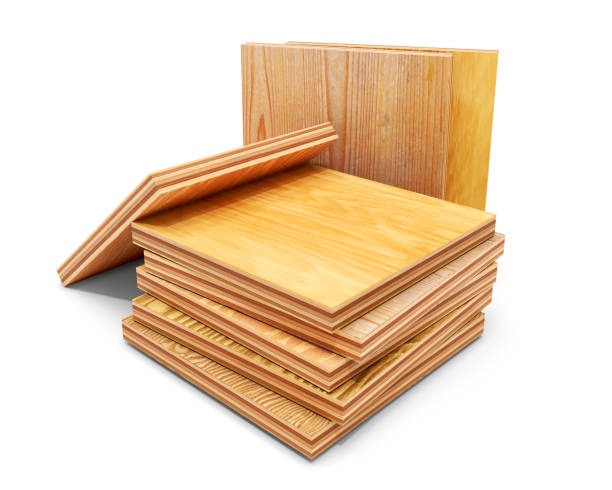In any building, structural integrity is crucial for ensuring the safety of its occupants. In the unfortunate event of a fire, the materials used in the construction can significantly impact how the fire spreads and how much damage is done to the building. Fire retardant plywood is a revolutionary material designed to slow the spread of flames and limit the extent of structural damage. This plywood, treated with fire-resistant chemicals, not only enhances fire safety but also helps protect a building’s structure during a fire emergency.
In this blog, we’ll explore how fire retardant plywood works and why it’s an essential component in preventing structural damage in the case of a fire.
What is Fire Retardant Plywood?
Fire retardant plywood is a type of plywood that has been treated with chemical fire-resistant solutions. These treatments are designed to slow down the combustion process, making the plywood less likely to catch fire and allowing it to resist the spread of flames. Unlike untreated wood, which can easily ignite and burn quickly, fire retardant plywood reduces the speed at which fire spreads, giving building occupants more time to evacuate and fire services more time to respond.
Fire retardant plywood is used in a wide range of applications, including walls, ceilings, floors, and even furniture. It plays a crucial role in increasing fire safety, particularly in commercial buildings where the risks are higher due to the size of the structure and the number of people present.
How Fire Retardant Plywood Prevents Structural Damage in a Fire
1. Slows Down the Spread of Flames
One of the primary benefits of fire retardant plywood is its ability to slow the spread of flames across surfaces. When exposed to fire, the treated plywood forms a protective layer that resists ignition, significantly delaying the fire’s progress. This is vital in a fire emergency, as it can slow the spread of flames throughout the building, preventing the fire from reaching critical areas like exit routes, stairwells, and other structural components. In larger buildings, this delay in the spread of fire can make all the difference in preventing catastrophic damage.
By reducing the spread of fire, fire retardant plywood provides valuable time for occupants to evacuate and for emergency responders to intervene before the flames engulf the entire structure.
2. Reduces Structural Collapse
Fire is not just a danger because of the flames; the intense heat can cause structural components to weaken and collapse. Traditional plywood can warp and weaken under high heat, potentially leading to partial or total collapse of the structure. Fire retardant plywood, however, resists ignition and can withstand high temperatures for longer periods. The fire-resistant treatment helps the plywood maintain its strength, preventing the structural elements from failing prematurely in a fire.
By preventing the rapid degradation of building components, fire retardant plywood plays a key role in preserving the integrity of the structure during a fire. This means that essential load-bearing walls, beams, and other structural elements are less likely to be compromised, reducing the risk of collapse.
3. Limits Smoke Damage
In addition to flames, smoke is one of the most destructive elements of a fire. Smoke damage can affect not only the structure but also the contents of the building, leaving behind soot, chemicals, and toxins. Fire retardant plywood helps to limit the amount of smoke produced by the material, as it resists combustion and burns at a slower rate. This means that less smoke is released, and the risk of smoke damage is reduced.
For commercial buildings like offices, hotels, and hospitals, limiting smoke damage is critical for the safety of occupants and for minimizing the costs of repairs and restoration.
4. Improves Fire Rating of Building Materials
Fire retardant plywood can improve the overall fire rating of a building. A building’s fire rating indicates how long the structure can withstand fire exposure before it begins to fail. Fire retardant plywood, when used as part of the walls, ceilings, and floors, can help increase the building’s overall fire rating, contributing to better fire resistance. By using fire-resistant materials in the right places, such as high-risk areas like hallways, stairwells, and exit points, the building can withstand fire for longer, allowing more time for people to evacuate and for fire services to take control.
This is particularly important in commercial spaces where building codes often require materials to meet specific fire resistance standards to protect both the structure and its occupants.
5. Enhances the Effectiveness of Fire Protection Systems
Fire retardant plywood works in conjunction with other fire protection systems, such as sprinklers, fire doors, and alarms. By slowing the spread of flames, fire retardant plywood buys time for these systems to function effectively. For example, in a building with a sprinkler system, fire retardant plywood can delay the fire’s progression long enough for the sprinklers to activate and suppress the flames.
In the absence of fire retardant materials, fire protection systems may be overwhelmed by the rapid spread of flames. By using fire retardant plywood, you help ensure that these systems have time to work and that the overall fire safety strategy is more effective.
Conclusion
In the event of a fire, every second counts when it comes to protecting lives and minimizing property damage. Fire retardant plywood is a vital material that can make a significant difference in preventing structural damage by slowing down the spread of flames, reducing the risk of collapse, limiting smoke damage, and enhancing the overall fire rating of a building.
By choosing fire retardant plywood for your building’s construction, you not only comply with fire safety regulations but also provide valuable protection for both people and property. Whether you’re designing a commercial building, renovating an office space, or working on a new project, fire retardant plywood should be an essential part of your fire safety strategy.


